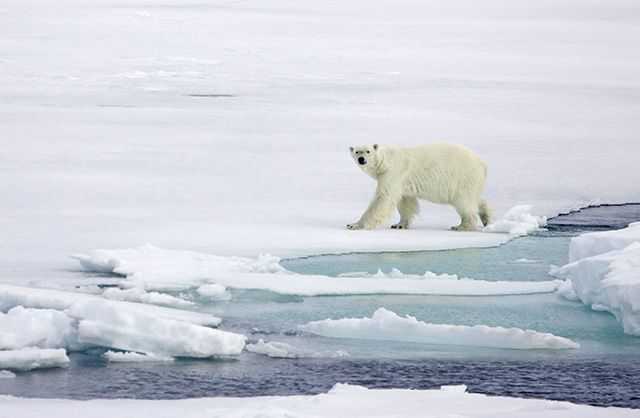
By Ellie Van Os
In December at the Florida Oceanographic Coastal Center, we are highlighting our frozen oceans because of heightened concern for global warming and because of a deep respect for the harsh life histories and complex food webs of these polar regions that are forever linked to our own. Our executive director, Mark Perry, was anxious that the topic be “brought home”, so we renamed it “Frozen Oceans – In Our Backyard.”
Interestingly it is not the melting of sea ice that raises sea level – sea ice is formed from sea water, therefore when it melts it does not add to sea water volume much the same way that ice cubes do not add to the volume of a drink as they melt. But the accelerated and early loss of sea ice in the summer season does increase the probability of glacial melt – glaciers originate with terrestrial precipitation – and glacial “water” is added to sea water to increase its level. The explanation for this is that albedo is an arbitrary measure of how well a surface reflects solar energy. The “perfectly reflective” surface of white is rated a “1”, and black the “perfect absorber” is given the value of “0” in that no energy is reflected, it is all absorbed. So the sooner sea ice melts in the summer, the darker the exposed surface (sea water) and the greater the amount of energy absorbed.
Unfortunately as more dark ocean surface is exposed, more energy is absorbed, melting more ice and exposing more dark surface, warming the atmosphere by adding significant amounts of energy and melting the “real” sea level rise villain, glaciers.

The National Snow and Ice Data Center at the University of Colorado Boulder monitors the extent of sea ice in our oceans. This year September 16th marked a new record low for the extent of sea ice in the Arctic Ocean when it covered only 1.32 million square miles – that is 1.27 million square miles below the average for the same time of year measured from 1979 to 2000. The predicted effect of these changes is less stable atmospheric energy and therefore more weather variation and extremes.
In contrast to the Arctic Ocean, sea ice extent in the Southern Ocean experienced a record high level this year. Scientists attribute this to increased circumpolar winds, fueled by warmer land and currents to the north that blew the sea ice outward, thereby increasing its extent. Unlike sea ice in the Arctic Ocean there are no continental barriers to its movement; in the Southern Ocean it disperses and melts more readily. But in fact even though the ice has increased its extent it does not come near to balancing the loss in the Arctic. The record high was 7.49 million square miles, 193,000 square miles more than the average for the last 30 years. Sea ice changes are measured by gains of tens of thousands of square miles in the Southern Ocean, but in the hundreds of thousands of square miles of losses in the Arctic Ocean.

The extent of sea ice has significant impacts on the animal populations. Sea ice is anything but barren and as a habitat not only provides a platform for breeding and hunting for charismatic megafauna like polar bears and ice seals but also offers a porous and stable environment over the course of harsh winters for photosynthetic algae, invertebrates and even early life stages of fish when sunlight cannot reach the water below. And when the sun is again a component of the ecosystem come spring, slow melting is important as it releases the organisms and their nutritious organic waste into the water fueling a crucial pulse of productivity in the water column and on the bottom. Without ice all of these organisms, big and small, would perish.
When wildlife organizations site the tragic loss of polar bears when referring to global warming, biologists are painfully aware that the bears represent the proverbial tip of the iceberg. Without the complex food web revitalized yearly by the spring phytoplankton bloom, there will be a catastrophic collapse of the polar system. A collapse of that magnitude will undoubtedly effect ecosystems worldwide. Without ice there will be no phytoplankton, no fish, seabirds, ice seals, polar bears and whales that use ice for migration routes, hunting grounds, breeding and as shelter in raising off spring.
So frozen oceans in our backyard is not a stretch. The issue is not only about the water but about an ecosystem critically important to the life histories of the animals that are a part of it. And once again we are reminded that even though we consider ourselves tropical by name, we share resources and are forever linked with the ecosystems of the polar regions by way of our oceans. Th e abundance of food in our polar seas in the summer season fuels the seabirds that come to our shores in the winter, the whales that pass our coast to breed in the warmth of our waters, and the fish that feed on the fish that feed on the abundance of plankton dependent on frozen oceans.
Ellie Van Os is Director of Education and Exhibits for the Florida Oceanographic Society. She can be contacted at evanos@floridaocean.org and by phone at (772) 225-0505 ext. 113.